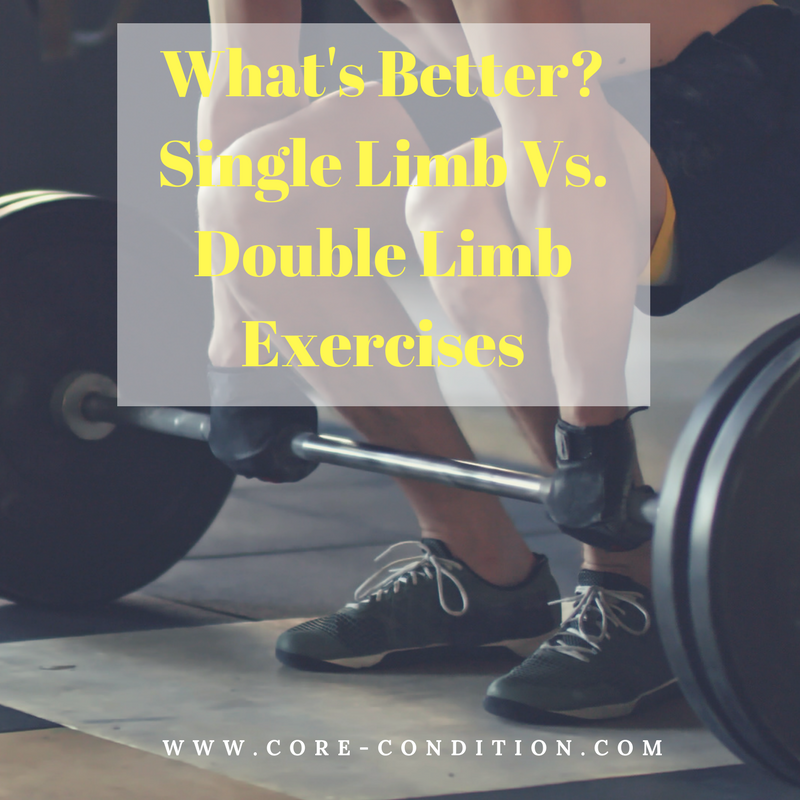- 604-362-9571
- Monday - Sunday
Blog

What’s Better? Single Limb Vs. Double Limb Exercises
- by Michelle
- August 7, 2017
This is a common question when it comes to working out. What is better? Single limb exercises or double limb exercises?
Answer:
BOTH!
There is a place for both in a regular workout routine, especially if your main goal is building strength. Functional training is a very broad term used to describe a form of exercise used to train the body for the activities performed in daily life. This is (in my opinion) the best way to build an overall lean, solid, and strong base to prevent injury and feel great day to day.
There are many benefits to adding functional exercise into your workout routine, another detail to look at is to perform single limb vs. double limb exercises. If you workout with dumbbells then most likely you are already performing single limb exercises with your upper body; however, when it comes to strengthening the lower body, many people turn to double leg squats or leg curls to build leg strength.
Double Leg Strength Exercises are Great, But……….
When performing double leg exercises only the prime movers are being placed under stress, resulting in strength gains of only these muscle groups. Although this is good for developing leg strength, it is not “functional”. Performing single leg exercises actually recruits more muscle groups at a time because not only are the prime movers are being challenged. The stabilizer muscles of the hip, the inside of the leg, and the lower back are also triggered to maintain balance and proper alignment (hip over knee and knee over toe).
Injury Prevention
Many common injuries are a result of muscle imbalances in the lower body, trunk, and core. Some people can get away with these imbalances without suffering serious pain or injury; however, muscle imbalance put you (especially athletes and physically active people) at a higher risk for acute or insidious onset/chronic-type injuries because the body is not able to properly transfer and absorb the loads placed on it.
Keep It All Balanced
It is very common for people to notice a significant difference in strength levels between left and right legs once they begin to perform exercises one leg at a time. This is because when they have been performing traditional double leg exercises the stronger leg has been “taking up the slack” for the weaker leg throughout the movement. Performing double limb lower body exercises have their place a training routine, but mixing it up by throwing in some single leg exercises are definitely beneficial for improved strength gains and injury prevention.
Single Limb Exercise Is Not Just For Rehabilitation
Many believe that single leg exercises are more for rehabilitation purposes and that more weight can be lifted when performing exercises with both legs; therefore, this will result in more strength gains in the long run. This is a myth. Looking back at the term functional strength training, which basically means training the muscles the way that we use them; most movements of the human body are unilateral, meaning one limb is stressed more than the other at any given time. This is especially relevant in a sporting atmosphere as most movements required in sport are unilateral and require strength in not only the prime movers (quads, gluts, and hamstrings), but also the stabilizers (hips, low back, core), in order to create a solid base of support, generate power, and prevent injury. A perfect example would be running, this action requires each foot to strike the ground individually from the opposing leg, which requires not only strength in each leg but strength in the stabilizer muscles to prevent falling over or injury.
Single Limb Exercise Examples:
Some examples of single limb exercises are single leg squats, single leg bench step-ups, or single leg deadlifts for the lower body and one arm row, 1 arm chest press, or dumbbell biceps curl for the upper body. Try this idea out next time you are at the gym, perform lower body exercises in front of a mirror and watch your hip, knee, and toe alignment in order to try and pinpoint an area of concern or muscle imbalances in your own body.
Main Takeaway
Perform a balance of both double limb and single limb strength exercises in order to build strength as well as stability and prevent imbalances. This is especially important in the lower body, so if you perform a regular squat with heavy weight, supplement that with static or walking lunges in order to challenge one leg at a time.
CONTACT US for more single leg exercises or more information about the benefits of functional training.
Happy Training!






